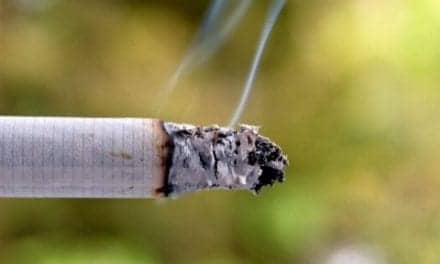Bethesda, Md — Drs Bechara Kachar and M’hamed Grati, reasearchers at the National Institute on 
Just as guitarists need to keep the tension on their guitar strings sufficiently tightened, the ear’s tip links, the tiny strands connecting between the ear’s stereocilia, need to be pulled tight in order to function. However, scientists have yet to find the tip links’ tuning mechanism or how it works. The two found proteins may be the key.
Tip links are infinitesimally tiny strands attached to stereocilia (pictured, right). Each bundle of stereocilia is arranged in three rows, like stairsteps, with the tip link resembling a piece of thread that stitches the tip of a lower stairstep to the taller one behind it.
When sound vibrations enter the inner ear, the stereocilia deflect to one side, causing the tip links to open special channels. Potassium ions enter the hair cell, which kicks off the electrical signal, and, almost immediately, the sound is "heard" by the brain.
Several years ago, Dr Kachar, as well as other laboratories at NIDCD and elsewhere, discovered that tip links are made of the proteins cadherin-23 and protocadherin-15—a major feat in hearing research. While it is now widely accepted that the upper insertion site of the tip link is where the "tuning gear" is located, the precise "tuning" mechanism and its molecular components are not known.
In this latest research, Kachar and Grati have localized two new proteins at this tuning site. Using inner ear tissue from rodent animal models, they developed fluorescent antibodies that adhere only to specific proteins and found two proteins that cluster in that region along with harmonin-b, a scaffolding protein that has been known to localize there.
The two proteins are myosin VIIa (MY07A)—a "motor" protein so called because it can move around a cell’s surface on its own—as well as another scaffolding protein called sans. The researchers confirmed their findings by separately injecting green fluorescent protein (GFP)–tagged DNA for MYO7A, sans, and harmonin into hair cells. They noticed the upper insertion region glowing green in each case, indicating that all three proteins had localized there.
The researchers then wanted to test how well the three proteins interact inside a cell. They injected GFP-tagged DNA for various combination of the proteins into kidney cells and found that if MYO7A and sans were injected alone, they remained diffuse throughout the cell. Only when they were injected in combination with harmonin did they form plaques, indicating co-localization. (Other prospective motor proteins were tested and found not to co-localize with sans and harmonin.)
Together, these findings suggest that MYO7A, sans, and harmonin form a three-way complex in the upper insertion region of the stereocilium, with the MYO7A motor acting as the "pull" to create the needed tension on the tip link.
These three proteins, in addition to cadherin-23 and protocadherin-15, have also been implicated in the type 1 form of Usher syndrome, a genetic disorder that can result in loss of hearing, balance, and vision. Understanding how the proteins interact as hair cells are developing could give us a clearer picture of what is happening with this disorder, for which there is currently no cure.
The new findings are published in the June 27 early online issue of the Proceedings of the National Academy of Sciences.
SOURCE: National Institute on Deafness and Other Communication Disorders (NIDCD)




